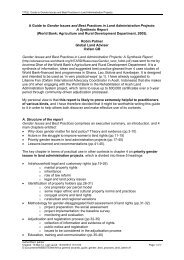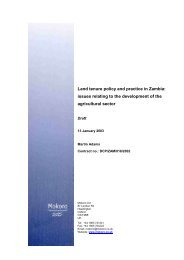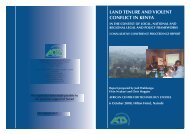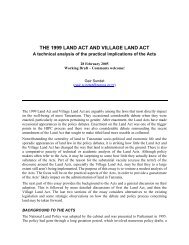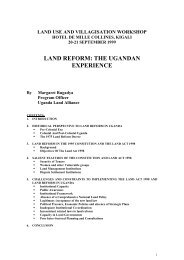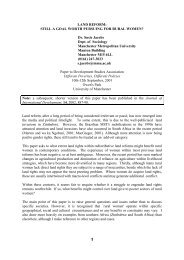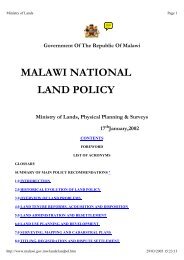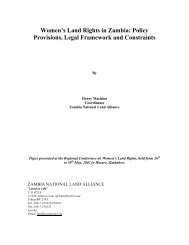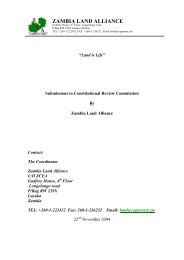Download - Mokoro
Download - Mokoro
Download - Mokoro
- No tags were found...
You also want an ePaper? Increase the reach of your titles
YUMPU automatically turns print PDFs into web optimized ePapers that Google loves.
44the 30% target, which national-level imperatives must inform and articulate with thelocal. National targets and indicators for success in land reform cannot be only thecomposite of local plans, through a process of aggregation. Agrarian policy will need toindicate where the priority areas are for redistribution, who the priority people are andwhat their needs are, how much existing farming systems can be disrupted, andtherefore what types of land use should be promoted and supported, where and forwhom.At a national level, then, what is still needed is to determine: Who should be targeted to receive land and agricultural support? What should be the appropriate mix of subsistence, small, medium andlarge-scale farmers? What does the choice of different groups of beneficiaries mean for SouthAfrica’s national imperatives, such as poverty reduction, agriculturaloutput, exports, and employment? What will be the impact of various land reform scenarios on the landmarket (supply, demand, prices)? What fiscal cost implications do the various scenarios of reaching the 30percent… have? How do the various land reform scenarios (in terms of the mix ofbeneficiaries) interact with the most likely international trade scenarios?(MALA 2003:30).The main argument put forward in South Africa against changing the agrarian structure,but merely transferring ownership of existing enterprises from one owner to another, isthe supposed threat that disrupting commercial farming would pose to national foodsecurity (FW De Klerk Foundation 2007, Du Toit 2004). This has been exaggerated,often by those with vested interests in the existing structure. In the past, price control aswell as subsidies created a net welfare transfer from urban consumers to commercialfarmers. However, deregulation of agriculture has not brought benefits to consumers inthe form of cheaper food. The mounting concern over rising food prices, spurred by boththe growth of fuel prices and interest rates, suggests that at a national level, the prioritymust be an agrarian reform that extends production of food for not only for selfprovisioning,and does so through systems of production that are less capital-intensive,more labour-intensive and less reliant on loans.Further, as shown above, in many agricultural products, including staple foods, SouthAfrica’s production far exceeds consumption. The problem of food insecurity athousehold level is a problem of distribution, not production. Even so, rapid changes inland use could be expected to lead to temporary dips in output but could lead toincreased overall output and more equitable distribution of the benefits, if land is moreintensively used. To what extent, then, could existing types of production be disrupted,even if temporarily, in order to restructure land use and expand livelihoods? To answerthis question, one needs to disaggregate agriculture by different scales of production,levels of output, profitability, employment and debt. White commercial farming areas areoften caricatured as the “large-scale commercial farming” sector but this is inaccurate inthat many white- and company-owned farms are not large in terms of land used,production or income. Further, large farms cannot be equated with large-scaleproduction, as farmland may be under-utilised or not used for agricultural purposes at all.Policy Options for Land and Agrarian ReformProgramme for Land and Agrarian Studies, University of the Western Cape




